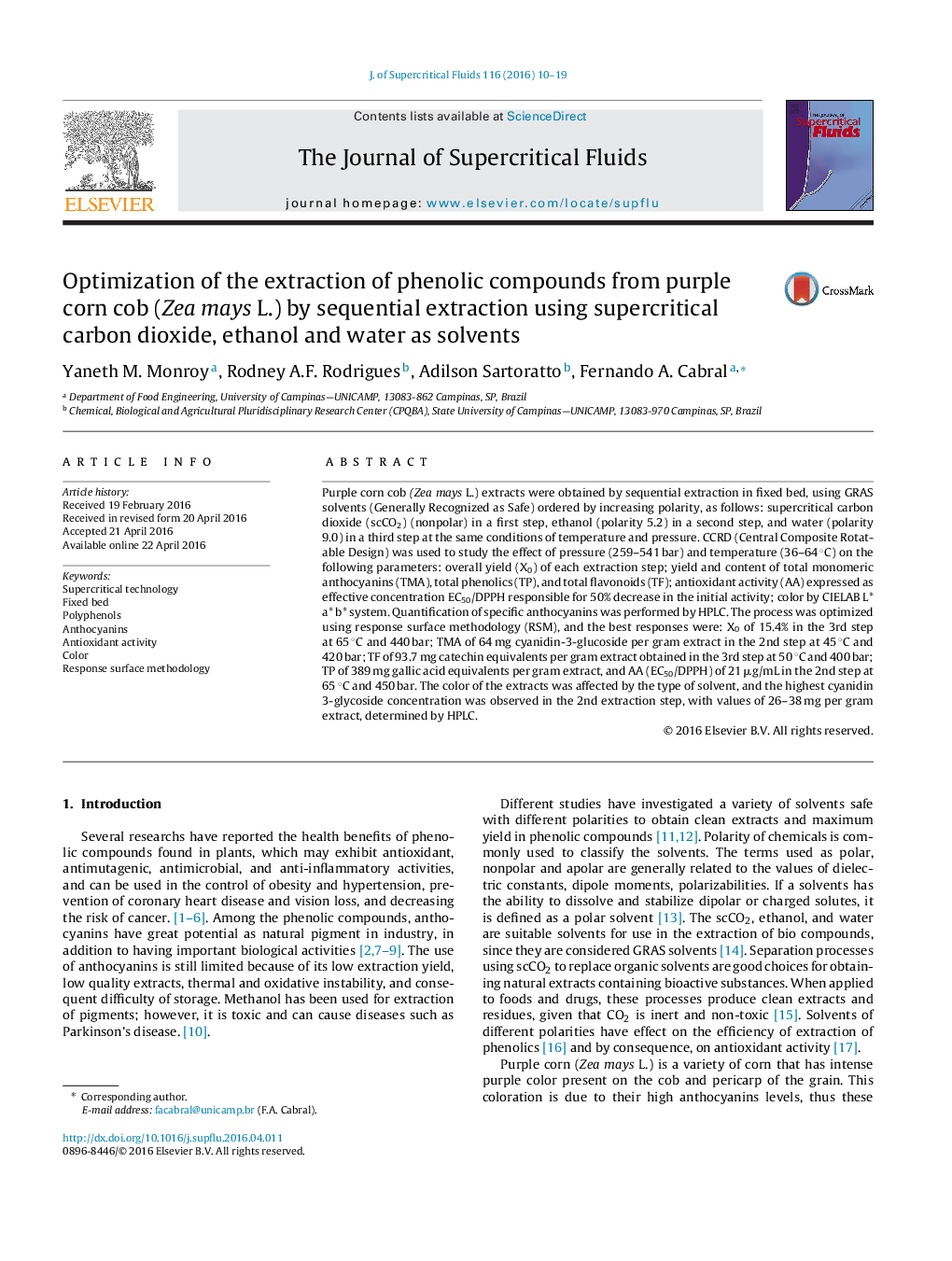| Article ID | Journal | Published Year | Pages | File Type |
|---|---|---|---|---|
| 229945 | The Journal of Supercritical Fluids | 2016 | 10 Pages |
•Anthocyanins and phenolic compounds from cob of purple corn were extracted in a sequential extraction with scCO2, ethanol and water.•CCRD (Central Composite Rotatable Design) was used to find the optimal conditions of pressure and temperature in the extraction of phenolics.•The process was optimized using response surface methodogy (RSM).•In general, the highest yields were obtained in aqueous extraction.
Purple corn cob (Zea mays L.) extracts were obtained by sequential extraction in fixed bed, using GRAS solvents (Generally Recognized as Safe) ordered by increasing polarity, as follows: supercritical carbon dioxide (scCO2) (nonpolar) in a first step, ethanol (polarity 5.2) in a second step, and water (polarity 9.0) in a third step at the same conditions of temperature and pressure. CCRD (Central Composite Rotatable Design) was used to study the effect of pressure (259–541 bar) and temperature (36–64 °C) on the following parameters: overall yield (X0) of each extraction step; yield and content of total monomeric anthocyanins (TMA), total phenolics (TP), and total flavonoids (TF); antioxidant activity (AA) expressed as effective concentration EC50/DPPH responsible for 50% decrease in the initial activity; color by CIELAB L* a* b* system. Quantification of specific anthocyanins was performed by HPLC. The process was optimized using response surface methodology (RSM), and the best responses were: X0 of 15.4% in the 3rd step at 65 °C and 440 bar; TMA of 64 mg cyanidin-3-glucoside per gram extract in the 2nd step at 45 °C and 420 bar; TF of 93.7 mg catechin equivalents per gram extract obtained in the 3rd step at 50 °C and 400 bar; TP of 389 mg gallic acid equivalents per gram extract, and AA (EC50/DPPH) of 21 μg/mL in the 2nd step at 65 °C and 450 bar. The color of the extracts was affected by the type of solvent, and the highest cyanidin 3-glycoside concentration was observed in the 2nd extraction step, with values of 26–38 mg per gram extract, determined by HPLC.
Graphical abstractFigure optionsDownload full-size imageDownload as PowerPoint slide
